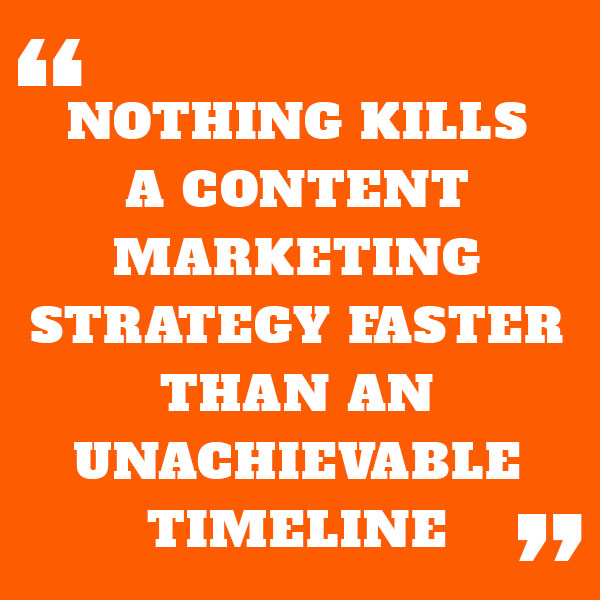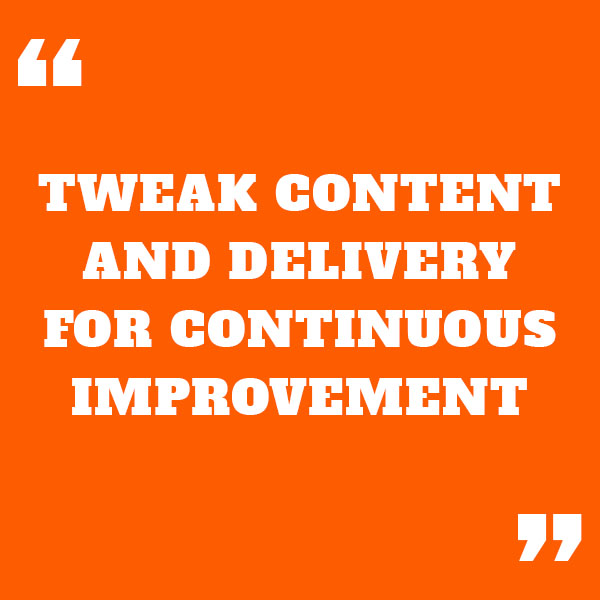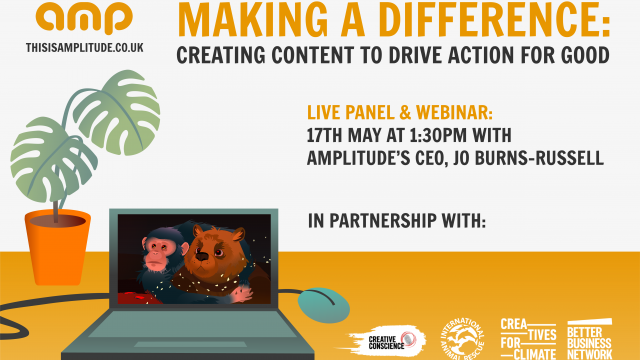Creating Your Content Marketing Strategy
Content marketing is all the rage these days, and for good reason: it provides results. Generally speaking, content marketing is cheaper than traditional marketing, produces a better ROI (Return On Investment), and fosters customer loyalty more effectively. It’s used by a huge number of brands, but there’s still a lot of confusion about what content marketing is. Thankfully, we’ve got an answer.
What is content marketing?
Simply put, content marketing is the strategy of creating and releasing useful, valuable content for consumption by your potential and current customers. By providing content that makes people smarter, makes their lives easier, or entertains them, you are endearing your brand or product to them.
People who value the content you produce will come to view your brand as experts in your field. If, for example, you consistently produce excellent advice articles on growing potatoes, who do you think your readers will turn to when they need a hand cultivating their crop?
Forms of content marketing
Content marketing can take many forms. Blog posts and newsletters are eternally popular, as is social media. Then there are videos and infographics, even company-owned print magazines. Often, brands will use several of the methods above in conjunction; for example, part of Amplitude’s strategy is to produce helpful and informative blog posts (like this one), then distribute them through social media.
What constitutes content marketing is extremely varied, because the definition of what people see as “value” is highly changeable. We’ll cover this in more detail in a moment, and look at how you can find value within your business. But first, to show you just how variable content marketing can be, here are a few of the more impressive content marketing campaigns we’ve seen. Notice that the value they provide to customers isn’t necessarily tangible or measurable:
John Deere have produced The Furrow magazine for over 120 years. It contains advice for farmers of all kinds and has meant that John Deere is a household name even for those that don’t rely on their products. Value provided: education & community.
Blendtec run a popular Youtube channel called Will It Blend? The premise is simple. They test the effectiveness of Blendtec blenders by using them to destroy everything from iPads to golf balls. It’s both entertaining and a great way to show off the power of their product. The channel resulted in 700% growth for Blendtec. Value provided: entertainment.
Coca-Cola began releasing bottles with “Share a coke with ____” labelling back in 2011. The bottles, branded with random names, led to people buying bottles for friends with those names, solidifying friendships and generating warm, fuzzy feelings for everyone involved. Value provided: stronger friendships.
Creating your Content Marketing Strategy
Companies using content marketing usually struggle with three things:
Producing engaging, valuable content
Establishing an ROI for the content they produce
Releasing content consistently
It’s important to do a bit of planning upfront to make sure you don’t fall into these traps; you’ll need a robust content marketing strategy to help you do this. There are hundreds of content marketing frameworks out there, many adapted from classic marketing planning frameworks like SOSTAC and RAMPS. But marketing execs are continually being asked to do more with less, so we prefer a simple framework that’s easily applies to everything from content marketing to business development. Our AMP model.
Analysis
Methodology
Performance
Let’s look at each part in more detail.
Analysis
Before you leap into creating content, you need to figure out what value looks like to your target customers, and how to best deliver that value. Carry out an analysis of your current business, competitors, and audience. Your main aims here are to define your target audience, what they value, and how best to communicate with them.
First, look inward. How long has your business been running? Who are your customers? Is there a common theme or demographic amongst your most lucrative customers? This will help define your audience.
Try to find out exactly what your audience values about your product or service. What problem do you help them solve? Most content you produce will be connected to the answer to this question. Bear in mind that what your customers value might not be easy to measure. For example, if you sell a discounted product, the value for your customer isn’t just getting a good product for a low price, but i also what they can do with the money they saved.

Take a look at your competitors to see what it is that they’re offering. Make a note of what they’re doing well and what they could be doing better. In particular, see what garners the most engagement from people in your audience. Find the types of content and social media platforms that work best for communicating value to them. Research social media platforms to see what types of content work best on different each. LinkedIn and Facebook prefer longer posts than Twitter, Instagram requires strong imagery.
Finally, define some objectives you want your strategy to achieve. Good objectives are SMART objectives, i.e. Specific, Measurable, Attainable, Relevant, and Time-bound. For example:
Increase engagement on Twitter by 25% in three months.
For startups and companies just getting started with social media, setting these objectives can be a tricky due to a lack of benchmark data. If that’s the case, rather than aiming to increase engagement/sales by a percentage, set achievable milestones. Come back and re-examine your objectives once you’ve got data under your belt.
Methodology
Now we’re getting to the meat of your content marketing strategy. You’ve defined your value and figured out how it’s best communicated, now you need to write out what you actually plan to do.
Begin by setting out the types of content you’ll produce based on your research. Will you be using blog posts or newsletters, video or infographics, or a combination of the above? If you have multiple audiences, lay out which types of content will be targeted towards each audience. Will all your content revolve around the same topic, or will it fall into categories? If so, what are the categories?
Determine which social media networks you’ll use for each type of content. Play to your strengths, or commit to investing in team skills to ensure you’re able to go where your audience is.
At this stage, you should also include specific thoughts on how your content will help you achieve your objectives. When it comes to reviewing and revising your content marketing strategy, you’ll want to know what was in your head when you wrote it. This is also particularly useful for inducting new people into your business.
As well as defining what content you’ll produce, you also need to  discuss how it will be produced and distributed, and how frequently you’ll release new content. Will you use a CMS (Content Management System)? If so, which? And which marketing automation tools will you use?
discuss how it will be produced and distributed, and how frequently you’ll release new content. Will you use a CMS (Content Management System)? If so, which? And which marketing automation tools will you use?
Create a timeline for your content and be realistic about how long it will take to produce and release. Nothing kills a content marketing strategy faster than an unachievable timeline.
Performance
Finally, lay out how you’ll track the performance of your content. If relying on solely digital content and distribution, you’ll be able to take advantage of tools built into social media platforms and marketing automation tools like Hootsuite. If your content is offline, as in the earlier examples with Coca-Cola and The Furrow, you may need to rely on sales or distribution statistics (or creative solutions) to gauge performance.
Report on performance at regular intervals so you can assess what’s working and what isn’t. Figure out which of your content pieces garners the most engagement, the best times of day to release or promote content, and which content produces the best ROI. Tweak content and delivery for continuous improvement.
Once you’ve had your strategy in place for a while and have been tracking performance for a few months, you’ll want to schedule some time to evaluate and improve it. Set a date for this in your content marketing strategy, but don’t forget to analyse and improve your day-to-day performance in the meantime.
When doing your detailed review, plot performance against your objectives and determine whether you’re on track to meet them. How close you are will tell you whether your content marketing strategy is working. Being slightly short of the mark might suggest you should revisit the finer details of your plan to see whether delivery of your content could be improved. Falling well short of your objectives might be symptomatic of a larger problem with your strategy, and could take you back to the drawing board.
objectives and determine whether you’re on track to meet them. How close you are will tell you whether your content marketing strategy is working. Being slightly short of the mark might suggest you should revisit the finer details of your plan to see whether delivery of your content could be improved. Falling well short of your objectives might be symptomatic of a larger problem with your strategy, and could take you back to the drawing board.
What next?
There you have it, the basics of creating a content marketing strategy. Of course, there’s much more detail we can and will go into in future blog posts. In the meantime, if you’ve got any questions, feel free to get in touch by email or on our social channels, and keep an eye on our blog for coverage of related topics.







